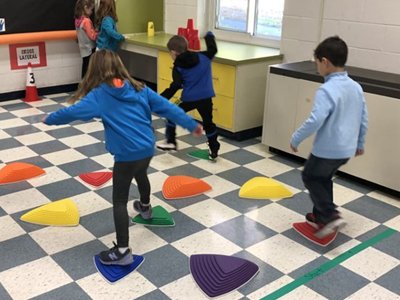Avoiding PE Opt Out Waivers
Does your school have a waiver that allows students to opt out of physical education? If so, take action today!
Read More Physical activity during school improves learning, social emotional skills and attention during class. However, recess and physical education are often taken away for punishment for students that didn’t complete their homework or acted out in class. These students may need physical activity the most. Ensure students get the activity they need by keeping them at recess and in physical education (PE) by choosing healthy, alternative consequences.
Physical activity during school improves learning, social emotional skills and attention during class. However, recess and physical education are often taken away for punishment for students that didn’t complete their homework or acted out in class. These students may need physical activity the most. Ensure students get the activity they need by keeping them at recess and in physical education (PE) by choosing healthy, alternative consequences.
Activities such as these help students explore…
Self-Management: Poor choices are exactly that – poor choices. Helping children understand that a bad choice (behavior) is not inevitable and does not make them a bad person. Creating opportunities for children to reset, reflect and build capacity within themselves to make better choices moving forward begins to build resiliency. Challenging behaviors are often displayed in response to something deeper, whether that be stress or anxiety, hunger or pain. Create spaces that support children in managing stress and impulses through physical activity and brain breaks. Students are better able to organize their thoughts and emotions when a consistent routine Is in place. Opportunities for movement may help to decrease behavior issues in the classroom by helping children to take a step back from the lesson and regroup.
Wellness policies often include language about not withholding physical activity as punishment. Use policy as a tool to make the case.
Ask school administrators to approve materials that are shared with staff and enforce alternative consequences to demonstrate their support.
Review classroom expectations frequently and develop consistent routines to help students understand what appropriate behavior looks like in the classroom.
Avoid using physical activity for punishment, such as making students walk laps or do push-ups for poor behavior. which can result in a negative association with physical activity.
For more activities and ideas like this one, be sure to sign up for our news and updates. And if you like what you see, please donate to support our work creating more ways to help build a healthier future for kids.
Categories: Physical Activity & Play, At School, Digital Resource